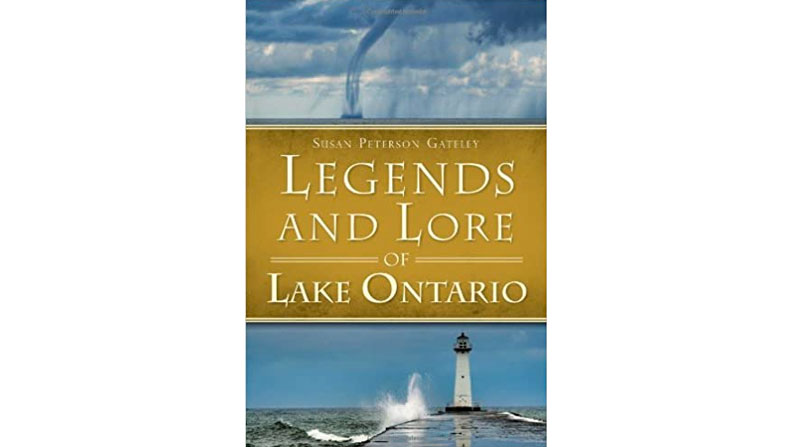 I suppose every sailor has experienced it —those frustrating times when it seems the gods conspire to keep him or her at the dock. For me it had been several weeks of lawns to cut, gutters to clean, drains to snake, anniversaries that must be attended, grandchildren to be entertained, and on and on — always something to prevent me from getting out on the lake and letting the wind and waves take me to a peace of mind that only the helm of a good old boat can bring. And so it was, with steeled determination, I swore that nothing — hell-fire, hurricanes, or hollering guilt-trips — would prevent me from slipping those mooring lines and heading out to open water.
I suppose every sailor has experienced it —those frustrating times when it seems the gods conspire to keep him or her at the dock. For me it had been several weeks of lawns to cut, gutters to clean, drains to snake, anniversaries that must be attended, grandchildren to be entertained, and on and on — always something to prevent me from getting out on the lake and letting the wind and waves take me to a peace of mind that only the helm of a good old boat can bring. And so it was, with steeled determination, I swore that nothing — hell-fire, hurricanes, or hollering guilt-trips — would prevent me from slipping those mooring lines and heading out to open water.
However, as I stood in the cockpit staring skyward at the flags hanging motionless from the pole atop the clubhouse, I faced a difficult decision. Should I stubbornly keep my promise to myself and motor out to bob around a glassy expanse, or accept that once again the gods were laughing at my mortal plight?
The day was gray with heavy moisture in the air. Fall had brought a bit of a chill to the air. I stepped below and put the kettle on for tea. Still wrestling with the conflict of decision-making, my eyes descended on the cover of a book sitting prominent in the rack—Legends and Lore of Lake Ontario by Susan Peterson Gateley. As steam began to rise from the kettle, the thin book seemed perfect, a small literary commitment in case the weather changed and I might still be able to hoist a sail instead of a cup of tea. I grabbed a plush pillow from the V-berth, made my tea, and stretched out on the settee to skim through a few pages, mourning what looked to be a wasted day.
I’m not much for ghosts and it would appear that Susan Peterson Gateley shares my cynicism. However, as she slowly enticed me in with multiple witnesses and documented collaborations, the logical explanations became somehow less logical. Sailors lost at sea in violent storms appearing ashore years later . . . ashen, disheveled, in soaking clothes, staring blankly at astonished beach wanderers before fading into the horizon. Visages of long-ago murder victims appearing in lighthouses. Or the phantom spirit of a soldier who walks the ramparts at Fort Ontario and has been seen clearly by several sentries, particularly before the nation goes to war. There are those who believe it to be the ghost of Lieutenant Basil Dunbar, who served during the French and Indian Wars. He’s said to have fallen in love with his commanding officer’s wife with disastrous results. A duel ensued, which Dunbar lost, and now his spirit lurks about the ramparts to beguile the young recruits of today. For myself, I couldn’t help thinking that the lady in question might have selected a lover who was a better fighter . . . or perhaps a husband who was a better lover.
I had no time to ponder the question further because the author quickly moved on to tales of monsters and mysteries that abound — a captain and crew who swore they cut a fifty-foot sea monster in half with their hull as it slept on the water’s surface. Each half then swam away.
I read of weather abnormalities that can create visions and mirages that confound and frighten, and ships that have disappeared without a trace with no logical explanation for their demise.
The afternoon was wasting away as I lay reading. But rather than checking the weather, I arose only to fortify myself with something a bit stronger than tea and settled back down to read more. And there was more . . . so much more. Sea battles, captured ships, goods smuggled back and forth across the lake both in days gone by and today when drugs, cigarettes, and human cargo are found by border patrol agents. In the final chapters, Susan chronicles the saga of what she calls “Lake Ontario’s Legendary Trio” — the Sturgeon, the Silver Salmon, and the American Eel. With knowledge gained from her years as a fisheries biologist she tells of an aquatic species that pre-dates the dinosaurs and can grow to 300 pounds over a 150-year life span, a time when salmon in Lake Ontario were so numerous that farmers could stand in a river and spear hundreds in a night with pitchforks as they returned to their spawning grounds, and eels that live more than a hundred years and swim over 3,700 miles from Lake Ontario to Bermuda to spawn before dying. All still swim beneath the waters of Lake Ontario, but with climate change, pollution, and the introduction of foreign species, who knows for how much longer?
When I finished, it was dark. The boat swung gently at her lines. I had not gone sailing, but my spirit was calm and I couldn’t help but think, “There should be more wasted days like this.”
Legends and Lore of Lake Ontario by Susan Peterson Gately (History Press, 2013, 128 pages)





